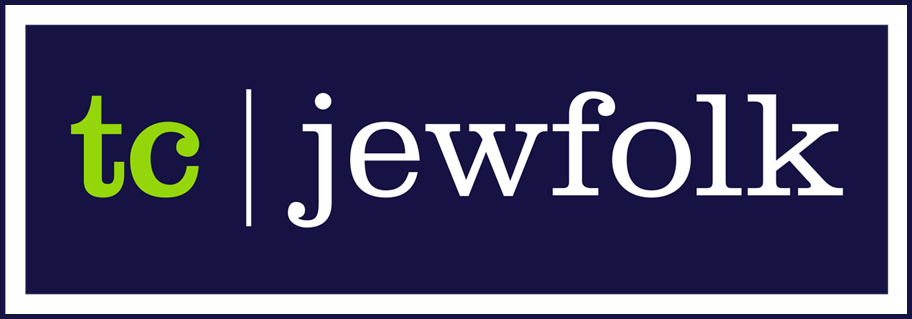The name Art Spiegelman is guaranteed to evoke one word for anyone familiar with the artist: Maus. His Pulitzer Prize-winning graphic novel (to date, the only one to be so honored), published in two volumes and considered a masterpiece by many, is the defining work of his life, something that has been as much a curse for him as a blessing.
People may not know or remember his early output when he started in San Francisco as part of the underground comics scene (Arcade), or that he created the Garbage Pail Kids in the 1980s, and that 20 years ago wrote a comic, In The Shadow Of No Towers, about being in New York after September 11.
Art Spiegelman: Disaster Is My Muse hits those notable moments of his career as a cartoonist, but the focus of the documentary is the legacy of Maus, the “500-pound mouse,” as Spiegelman puts it – and the larger aftermath of the Holocaust upon his Survivor parents, whose story he tells in Maus, and on Spiegelman, who took that pain and made something cathartic, immensely powerful and remarkable.
Directors Philip Dolin and Molly Bernstein (Deceptive Practice: The Mysteries and Mentors of Ricky Jay) spent more than eight years filming Spiegelman, his wife Francoise Mouly, the art editor at the New Yorker since the 90s, and interviewing comic luminaries such as Robert Crumb and Aline Kaminsky-Crumb and Joe Sacco, notable literary figures including J. Hoberman and Hillary Chute, and filmmakers Ken and Flo Jacobs. Spiegelman is a fascinating person and his half-century plus as a cartoonist, the profound tragedies that decimated his family, how he helped to change the comics landscape into one where they were viewed as a vital art form, and his new role as a champion of free speech, make for a compelling study of the septuagenarian.
The central theme of Disaster and of Spiegelman’s life is the early trauma and loss that indelibly shaped him. But more than that, it’s about how, as he struggled to comprehend what had happened to his parents, his extended family in Europe and the calculated machinery of the Nazis and their collaborators, he used his work as therapy and ultimately, to educate millions about the Holocaust. His parents, whose firstborn son had been killed during the war, brought with them to America an incalculable amount of anguish. Though this grief suffused Spiegelman’s childhood and adolescence, his parents only gave him “shards of information” about what they had endured.
The death of his mother Anja by suicide when he was 20 and the comic he wrote about that pivotal period of his life – Prisoner On The Hell Planet: A Case History – was one of his early efforts to grapple with “the ghosts hanging over the household.” Following her death, Spiegelman and his father, Vladek, with whom he’d always had a deeply fraught relationship, decided to do a book together as a way to grow closer. It was out of the interviews that he conducted with Vladek for the book in the late 70s and early 80s, before his death, in which he wanted to finally hear his father’s account of the Holocaust, that Spiegelman crafted what would become the graphic novel. At the time, he and Mouly published RAW, and at her suggestion, Maus ran in serialized chapters in the magazine.
The success of Maus and the “undeserved” celebrity that came with it (as he viewed it), combined with the guilt Spiegelman carried, left him paralyzed and unable to get off the couch for months. In a strip, he wrote: “I feel inadequate in trying to do this because the reality is too complex for comics. So much has to be left out or distorted.” Following what had to be much-needed actual therapy, Spiegelman began working on the second volume, Maus II: A Survivor’s Tale: And Here My Troubles Began, which Mouly described as “a descent into Hell” for him. In the end, he spent 13 years researching for the volumes, and made a point of insisting that when the New York Times Book Review incorrectly put Maus on their Fiction list that it be placed on the Non-Fiction list.
For years, Spiegelman was done with talking about Maus not just because of the physical and mental toll, but because he was exhausted with answering the same questions over and over. It was with the first Trump administration’s courting of fascism that he found a renewed purpose with Maus and an unexpected calling as a vocal anti-censorship and anti-authoritarianism advocate. He became a frequent panelist and guest speaker at events, especially during COVID and post-pandemic, as book bans increased, in particular those that were removing works that are part of the Holocaust canon, like The Diary Of Anne Frank and Maus.
The briskly-paced documentary isn’t a complete portrait. I didn’t even know Spiegelman and Mouly had had children until well into the film (they only appear nominally). Mouly gets some screen time, but it’s not proportionate to her contributions to her husband’s work or in her own right as an artist and editor. The filmmakers have little interest in exploring what he was like as a father or husband, which might have offered further insights into the man as well as the artist. But that doesn’t take away from this timely, captivating look at one of the most important artists of the late 20th century, as well as our current cultural and political moment.
Art Spiegelman: Disaster Is My Muse premieres on PBS as part of the American Masters series on April 15. Check local listings.


